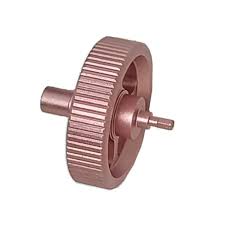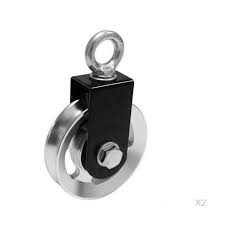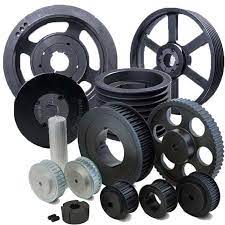Product Description
Durable Auto Engine Pulley Wheel Spinning Pulley for Motor
| Product Name | parts by powder metallurgy |
| Material | Iron powder, alloy powder,precious metal powder |
| Technology | Sintering – Powder Metallurgy |
| Certificate | ISO9001/TS16949 |
| Surface Treatment | High frequency quenching, oil impregnation,CNC,vacuum cleaning,polishing, |
| Apperance | No crumbling, cracks, exfoliation, voids, metal pitting and other defects |
| Process Flow |
Powder mixing – Forming – Sintering – Oil impregnation – Sizing -Ultrasonic cleaning – Steam oxidation – Oil impregnation – Final inspection – Packing |
| Application | Motorcycle parts, auto parts, Power Tools parts, Motor parts, electric Bicycle |
Why Powdered Metals?
Significant cost savings.
Create complex or unique shapes.
No or minimal waste during production.
High quality finished products.
Strength of materials
Production process of powder metallurgy
Powder mixing – Forming – Sintering – Oil impregnation – Sizing -Ultrasonic cleaning – Steam oxidation – Oil impregnation – Final inspection – Packing
Company Profile
CHINAMFG established in 2007
Manufacturer & Exporter
Exacting in producing powder metallurgy gears and parts
Passed ISO/TS16949 Quality Certificate
Advanced Equipment
Numbers senior R & D engineers and Skilled operators
Precise Examination Instruments.
Strict Quality Control
With the “More diversity, More superior, More professional ” business purposes, we are committed to establish long-term friendship and CHINAMFG relationship with domestic and international customers to create a bright future .
Please Send us your 2D or 3D drawings to start our cooperation!
/* January 22, 2571 19:08:37 */!function(){function s(e,r){var a,o={};try{e&&e.split(“,”).forEach(function(e,t){e&&(a=e.match(/(.*?):(.*)$/))&&1
| Certification: | ISO, ISO9001/Ts16949 |
|---|---|
| Pulley Sizes: | Type A |
| Manufacturing Process: | Powder Metallurgy |
| Material: | Alloy |
| Surface Treatment: | Polishing |
| Application: | Automobile Engine |
| Samples: |
US$ 2/Piece
1 Piece(Min.Order) | |
|---|
| Customization: |
Available
| Customized Request |
|---|

What role do spinning pulleys play in power transmission and conveyor systems?
Spinning pulleys play a crucial role in both power transmission and conveyor systems. Let’s examine their specific functions in each:
Power Transmission Systems:
In power transmission systems, spinning pulleys facilitate the transfer of mechanical power from a power source to driven components. Here’s how they contribute to the power transmission process:
– Energy Transfer: Spinning pulleys, combined with belts, ropes, or cables, enable the transfer of rotational energy from the power source, such as an electric motor or engine, to various driven components. They efficiently transmit power over distances and around obstacles.
– Speed and Torque Adjustment: By utilizing spinning pulleys of different sizes or diameters, power transmission systems can adjust the rotational speed and torque output. This allows for matching the speed and torque requirements of different components, ensuring efficient operation and preventing damage due to excessive speed or insufficient torque.
– Load Distribution: Spinning pulleys help distribute the load across the power transmission system. By using multiple pulleys and transmission elements, the load is shared among them, reducing the strain on individual components and increasing overall system durability and reliability.
– Belt Tension and Grip: Spinning pulleys maintain proper tension and grip on belts, ropes, or cables. They ensure that the power transmission elements remain securely in place, minimizing slippage and optimizing power transfer. Adequate tension and grip also contribute to the longevity of the components.
Conveyor Systems:
In conveyor systems, spinning pulleys are essential components that enable the movement of materials along a conveyor belt or other conveying medium. Here’s how they contribute to conveyor system operation:
– Belt Tension and Tracking: Spinning pulleys help maintain proper tension in the conveyor belt, ensuring it remains taut and properly aligned. This prevents belt sagging, reduces the risk of material spillage, and improves overall conveyor performance.
– Belt Speed Control: By adjusting the rotation speed of the spinning pulleys, conveyor systems can control the speed at which materials are transported. This allows for precise material handling, accommodating different production rates and optimizing operational efficiency.
– Directional Change: Spinning pulleys are used in conveyor systems to change the direction of the conveyor belt. By incorporating pulleys with different orientations, the conveyor belt can navigate curves, corners, inclines, or declines, adapting to the layout and requirements of the material handling process.
– Material Sorting and Diversion: Conveyor systems often utilize spinning pulleys with specialized features, such as sorting or diverting mechanisms. These pulleys enable the controlled separation or diversion of materials to different conveyor lines, chutes, or processing stations, enhancing automation and streamlining material flow.
– Load Capacity: Spinning pulleys in conveyor systems are designed to handle specific load capacities. Proper pulley selection ensures that the system can support the weight and characteristics of the conveyed materials without compromising performance or causing premature wear.
Overall, spinning pulleys are indispensable components in power transmission and conveyor systems. They enable efficient energy transfer, speed and torque adjustment, load distribution, belt tension, and grip control in power transmission systems. In conveyor systems, spinning pulleys facilitate belt tensioning, speed control, directional change, material sorting, and handling a range of load capacities. Their reliable operation ensures smooth and effective functioning of these systems in various industries and applications.

How do spinning pulleys enhance the precision and efficiency of machinery and equipment?
Spinning pulleys play a crucial role in enhancing the precision and efficiency of machinery and equipment. Here’s a detailed explanation of how spinning pulleys contribute to these improvements:
1. Mechanical Advantage:
Spinning pulleys enable the creation of mechanical advantage in various mechanical systems. By using different-sized pulleys and adjusting the number of times the rope or belt wraps around them, the force required to perform a specific task can be amplified or reduced. This allows machinery and equipment to perform tasks with greater precision and efficiency by optimizing the force applied to the system.
2. Power Transmission:
Spinning pulleys are commonly used in power transmission systems. By connecting multiple pulleys with ropes or belts, they facilitate the transfer of mechanical power from one component to another. This enables efficient power distribution and ensures that machinery and equipment operate at their maximum efficiency. Spinning pulleys help minimize power losses and enable the precise transmission of power to different parts of the system.
3. Speed Control:
Spinning pulleys provide speed control capabilities in machinery and equipment. By using pulleys of different sizes, the rotational speed can be adjusted. This is achieved by changing the ratio of the pulley diameters, which alters the speed at which the rope or belt travels around the pulleys. Speed control allows for precise control over the movement and operation of machinery, ensuring that tasks are performed efficiently and accurately.
4. Directional Control:
Spinning pulleys are instrumental in changing the direction of force within mechanical systems. By routing a rope or belt through the pulleys, the force can be redirected to different components or locations. This ability to change the direction of force enhances the precision and efficiency of machinery and equipment by allowing for flexible and precise control over the movement and positioning of various parts.
5. Tensioning and Control:
Spinning pulleys are used to control the tension in ropes or belts within machinery and equipment. Proper tensioning is crucial for maintaining optimal performance and preventing slippage. By adjusting the position and angle of spinning pulleys, the tension in the rope or belt can be controlled, ensuring smooth and efficient operation. This contributes to the overall precision and efficiency of the machinery or equipment.
6. Load Distribution:
In applications where heavy loads need to be moved or supported, spinning pulleys are used to distribute the load evenly across multiple pulleys and ropes or belts. This prevents excessive stress on specific components and ensures smooth and efficient operation. Load distribution provided by spinning pulleys enhances the precision and longevity of machinery and equipment, as it minimizes wear and tear on individual parts.
By leveraging the mechanical advantages, power transmission capabilities, speed control, directional control, tensioning and control features, as well as load distribution properties of spinning pulleys, machinery and equipment can achieve higher levels of precision and efficiency in various industries and applications.

What types of belts or cables are typically employed with spinning pulleys?
Spinning pulleys are commonly used with various types of belts or cables, depending on the specific application and requirements. Here are some typical types:
1. V-Belts:
V-belts are a common choice for spinning pulleys in many applications. They have a trapezoidal cross-section and are designed to fit into V-shaped grooves on the pulley. V-belts provide reliable power transmission, high grip, and good flexibility, making them suitable for a wide range of speed and load conditions.
2. Timing Belts:
Timing belts, also known as synchronous belts, are used when precise synchronization of components is required. They feature teeth on the inner surface that mesh with corresponding grooves on the spinning pulley. Timing belts are commonly employed in applications such as engines, robotics, and precision machinery, where accurate positioning and timing are critical.
3. Flat Belts:
Flat belts are characterized by their flat, rectangular shape and are often made of materials such as rubber, polyurethane, or fabric. They rely on friction between the belt and the spinning pulley for power transmission. Flat belts are used in applications where high-speed operation, minimal vibration, and quiet operation are desired. They are commonly found in equipment such as textile machinery, printing presses, and packaging systems.
4. Serpentine Belts:
Serpentine belts are wide, flat belts with multiple ribs on the inner surface. They are commonly used in automotive engines to drive multiple components such as the alternator, power steering pump, water pump, and air conditioning compressor. Serpentine belts provide efficient power transmission and are designed to handle high loads and demanding conditions.
5. Wire Ropes or Cables:
In certain applications, spinning pulleys may be used with wire ropes or cables. Wire ropes are composed of multiple strands of wire twisted together to form a strong and flexible cable. They are commonly employed in lifting and hoisting equipment, cranes, and elevators, where high tensile strength and durability are required.
6. Chains:
Spinning pulleys can also be used with chains for power transmission. Chains consist of interconnected links that engage with sprockets on the spinning pulley. They are often used in heavy-duty applications, such as industrial machinery, agricultural equipment, and motorcycles, where high loads and robust operation are necessary.
The selection of the appropriate belt or cable depends on factors such as the power requirements, speed, load conditions, environmental factors, and specific application considerations. Manufacturers and engineers consider these factors to choose the most suitable belt or cable type for optimal performance and longevity in conjunction with spinning pulleys.


editor by CX
2024-03-27